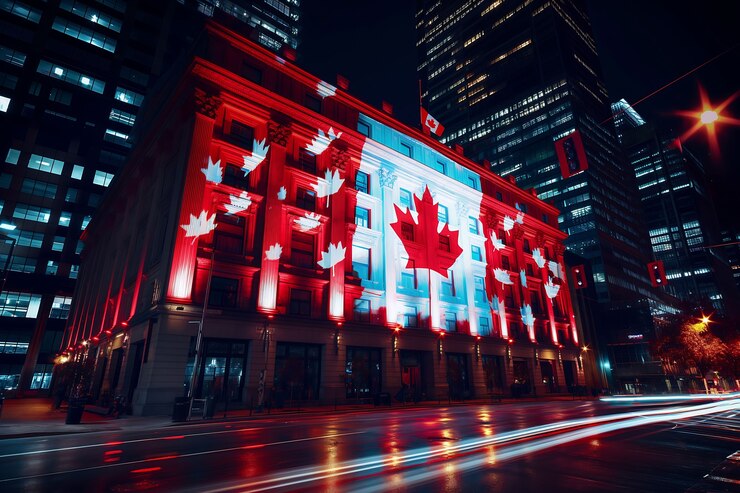The 2025 Canadian federal election has concluded, with the Liberal Party, under the leadership of Prime Minister Mark Carney, securing a victory. However, they fell short of obtaining a majority in the House of Commons, leading to the formation of a minority government. This article provides a comprehensive breakdown of the election results, regional variations, and the implications for Canada’s political landscape.
National Overview: Election Outcome
In the 2025 federal election, all 343 seats in the House of Commons were contested. A party requires 172 seats to form a majority government. The Liberal Party, led by Mark Carney, secured approximately 162 seats, while the Conservative Party, under Pierre Poilievre, won around 121 seats. The New Democratic Party (NDP) and Bloc Québécois obtained 24 and 32 seats, respectively. The Green Party and the People’s Party of Canada each won three seats. This distribution indicates a significant shift towards a two-party system, with the Liberals and Conservatives dominating the political scene.
Regional Breakdown of Results
Understanding regional voting patterns is crucial to grasp the election’s full impact. Below is a table summarizing the seat distribution by province:
|
Province/Territory
|
Liberal Seats | Conservative Seats | NDP Seats | Bloc Québécois Seats | Green Party Seats |
People’s Party Seats
|
| Ontario | 50 | 40 | 10 | 2 | 1 | 0 |
| Quebec | 30 | 15 | 5 | 32 | 0 | 0 |
| British Columbia | 20 | 12 | 8 | 0 | 2 | 1 |
| Alberta | 5 | 25 | 0 | 0 | 0 | 0 |
| Saskatchewan | 2 | 14 | 0 | 0 | 0 | 0 |
| Manitoba | 3 | 6 | 1 | 0 | 0 | 0 |
| Atlantic Canada | 12 | 5 | 0 | 0 | 0 | 0 |
| Territories | 0 | 0 | 0 | 0 | 0 | 0 |
This table highlights the Liberals’ strong performance in Ontario and Quebec, while the Conservatives dominated in Alberta and Saskatchewan.
Key Factors Influencing the Election
Several factors played a pivotal role in shaping the election results:
- Leadership Dynamics: Mark Carney’s leadership was instrumental in the Liberal Party’s success. His background as a former central banker and his stance on national sovereignty resonated with many voters. Conversely, Pierre Poilievre’s alignment with certain U.S. political ideologies may have influenced Conservative support.
- Economic Concerns: Rising living costs and economic uncertainty were significant issues for voters. The Liberals’ promises of economic stability and support for middle-class Canadians appealed to many.
- International Relations: Tensions with the United States, particularly regarding trade policies and sovereignty, were central themes. Carney’s firm stance against potential U.S. annexation garnered support, especially in provinces like Ontario.
- Regional Priorities: Different provinces had varying concerns. For instance, Alberta’s focus on energy policies influenced its support for the Conservatives, while Quebec’s emphasis on cultural preservation bolstered the Bloc Québécois.
Frequently Asked Questions (FAQs)
1. What does a minority government mean for Canada?
A minority government occurs when the ruling party does not hold a majority of seats in the House of Commons. This situation requires the governing party to seek support from other parties to pass legislation and maintain confidence in the House.
2. How will the Liberal Party form a government without a majority?
The Liberal Party may need to negotiate with other parties, such as the NDP or Bloc Québécois, to secure the necessary votes for legislation and confidence motions. This could involve policy compromises or informal agreements.
3. What are the implications of the election results for Canadian-U.S. relations?
The election results indicate a shift towards a more assertive Canadian foreign policy. Prime Minister Carney’s emphasis on defending Canada’s sovereignty suggests a more cautious approach to relations with the United States, particularly concerning trade and territorial issues.
4. How did voter turnout compare to previous elections?
Voter turnout was notably high, reflecting increased public interest and engagement in the electoral process. This surge in participation may be attributed to the significant national and international issues at stake during this election cycle.
5. What are the next steps for the new government?
The new government will focus on forming a cabinet, establishing legislative priorities, and addressing pressing issues such as economic recovery, healthcare, and international relations. The minority status will necessitate strategic alliances and negotiations with other parties to ensure effective governance.
Visualizing the Election Results
To provide a clearer understanding of the election outcomes, refer to the following map illustrating the seat distribution across Canada:
Note: This map is for illustrative purposes. For official results, please refer to Elections Canada’s website.
Conclusion
The 2025 Canadian federal election has reshaped the nation’s political landscape. With the Liberal Party forming a minority government, Prime Minister Mark Carney faces the challenge of navigating a divided House of Commons and addressing the diverse concerns of Canadians. The coming months will be crucial in determining the direction of Canada’s domestic and foreign policies.
For the most up-to-date information and detailed results, visit Elections Canada.




Leave a Reply